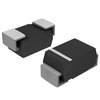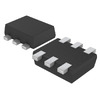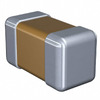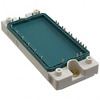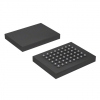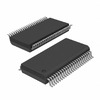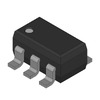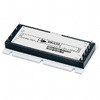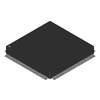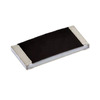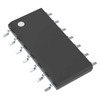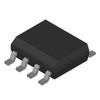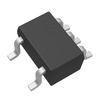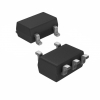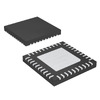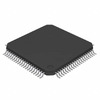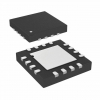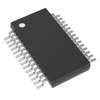Everything About PIC16F84A Microcontroller
Peripheral Interface Controllers (PICs) in 1993 revolutionized the microcontroller landscape, offering programmable solutions that balanced simplicity with functionality. Among these, the PIC16F84A by Microchip Technology has become a standout model, famous for its adaptability and reliability in a wide range of applications. From projects to advanced automation systems, this microcontroller combines efficiency, cost-effectiveness, and accessible design, making it a popular choice across industries and educational platforms. This article digs into the technical attributes, architecture, and actual applications of the PIC16F84A, uncovering why it remains a basic part of modern electronics and a cornerstone of innovation in embedded systems. This guide offers valuable insights into what makes the PIC16F84A a timeless microcontroller.Catalog

Overview of the PIC16F84A Microcontroller
The PIC16F84A, an 8-bit microcontroller crafted by Microchip Technology, presents a noteworthy step forward from its predecessor, the PIC16C84, launched in 1998. This device features a formidable RISC CPU, boosting both processing speed and performance efficiency. It encompasses an 8-bit timer and supports serial programming, which caters to efficient device interactions and communications, reflecting your desire for connection and clarity. Operating at a clock frequency of 20MHz, the PIC16F84A balances its memory resources with 64 bytes of EEPROM for data retention, 1K of program memory, and 8 bytes of data memory. Equipped with 13 adaptable GPIO pins, it is suitable for diverse uses, ranging from simple DIY projects to intricate professional-level applications.
The emergence of the PIC16F84A signified a key moment in microcontroller technology, advancing beyond its predecessor, the PIC16C84. The integration of a RISC CPU not only heightens its computing abilities but also enhances the complexity and efficiency of programming possibilities. This is mainly useful for timed operations and task scheduling enabled by the 8-bit timer, akin to your pursuit of time management and efficiency. Experience has shown that this harmonious feature set supports smooth integration into existing systems, thereby enhancing user interaction without compromising capabilities.
The thoughtfully designed memory architecture of the microcontroller separates program and data storage, providing a foundation for executing instructions and retrieving data effectively. The inclusion of 64 bytes of EEPROM as non-volatile storage serves applications that need to maintain data between power cycles, resonating with your need for memory and continuity. This distinctive memory configuration has proven its worth in industrial settings, allowing you to optimize program efficiency while safeguarding data integrity.
Pin Layout

|
Pin Number(s) |
Pin Name(s) |
Description |
|
1, 2, 3, 6, 7, 8, 9, 10, 11, 12, 13, 17, 18 |
GPIO Pins |
These 13 GPIO pins can be configured independently as
digital input or output. Each pin can supply or absorb a maximum current of
25mA, sufficient to drive LEDs but not relays or DC motors. |
|
4 |
MCLR |
Memory Clear pin (active low) used to reset the device.
When connected to GND, it resets the microcontroller. |
|
5 |
GND |
Ground pin, connected to the negative terminal of the
power supply. |
|
14 |
VDD |
Voltage supply pin, connected to the positive terminal of
the power supply. The microcontroller operates at a 5V supply voltage. |
|
15, 16 |
OSC1/OSC2 |
Crystal oscillator pins. Supports up to 20MHz frequency.
Higher frequencies increase power consumption. Use a 20MHz crystal with two
22pF capacitors across these pins. |
Characteristics and Technical Specifications
|
Feature/Specification |
Description |
|
I/O Pins |
13 I/O pins, individually configurable as input or
output. |
|
EEPROM Memory |
64 bytes, used for data storage. |
|
Program Memory |
1K program memory. |
|
RAM |
68 bytes. |
|
Registers |
Two types: General Purpose Registers (GPR) for arbitrary
values and Special Function Registers (SFR) for controlling device functions. |
|
Compilers |
Supports MPLAB C18 and MikroC Pro. Code written generates
a hex file for the microcontroller. |
|
RAM Banks |
Includes 4 banks; specific banks must be selected before
accessing registers. |
|
USART Module |
Yes, includes a USART module. |
|
Flash Memory |
8-bit based, suitable for both prototyping and
production. |
|
Bus Width |
8 Bits. |
|
Package Types |
18 pins available in PDIP, SOIC, or 20-pin SSOP packages. |
|
Processor Speed |
5 million instructions per second (MIPS). |
|
Program Memory Size |
1750 Bytes. |
|
Operating Voltage |
Ranges from 2V to 5.5V. |
|
Internal Oscillator |
Not available. |
|
External Oscillator |
Supports up to 20MHz. |
Core Functions
The microcontroller combines features that enhance performance and adaptability in diverse electronic applications. Key among these is In-Circuit Serial Programming (ICSP), enabling direct programming via a USART module without removing the chip, streamlining development, and fostering a seamless workflow.
An embedded Watchdog timer ensures system reliability by automatically resetting during anomalies, vital for uninterrupted operations. The 8-bit timer, with timer and counter functions and selectable clock sources, offers precision and flexibility for various use cases. Energy efficiency is bolstered by a sleep mode, interruptible externally, ideal for battery-powered devices by conserving power and supporting sustainable design. A Power-on Reset feature ensures stable startup, preventing unpredictable behavior and improving reliability, especially in consumer electronics.
These advanced functions highlight the microcontroller's versatility and the importance of troubleshooting and power management in modern electronic design, driving efficient and reliable product development.
Understanding the Architecture of the PIC16F84A Microcontroller
Within the expansive universe of embedded systems, the architecture of the PIC16F84A microcontroller stands out for its durable features and adept design. At the core of this architecture lies the Flash Program Memory. This distinct type of non-volatile memory stores program code and offers the distinctive advantage of being rewritten up to a thousand times. Such capability significantly extends the microcontroller's service life, making it a favorite for iterative development and addressing software anomalies. In modern technological contexts, Flash memory shines in maintaining the integrity of firmware needing frequent updates.

Memory Management and Banks
The efficient RAM structure within the microcontroller leverages bank-switching—an approach that divides memory into separate banks. This technique is key for executing complex operations and managing limited resources wisely, which resonates with systems where judicious byte usage deeply influences overall performance metrics. Special Function Registers (SFR) possess designated roles that streamline core processes, such as input/output tasks, thereby enhancing the utilization of available resources.
EEPROM and Data Persistence
EEPROM memory is renowned for its robust reliability and can endure rewriting up to one million times. This makes it a perfect candidate for storing data that undergoes infrequent changes yet requires retention through power cycles. Such permanence is highly advantageous in scenarios involving configuration settings or calibration constants, where data stability and longevity are valued. You can frequently capitalize on this endurance to circumvent the complexity of additional external storage solutions.
Registers and Operational Fluency
Registers such as the Program Counter, W Register, and STATUS Register ensure the microcontroller functions with precision and fluidity. The Program Counter, basic to ordering instruction sequences, embodies a core tenet of embedded programming—ensuring precise control flow management. The W Register takes center stage in executing arithmetic and logic operations, highlighting the microcontroller’s aptitude for handling computational tasks. Meanwhile, the STATUS Register offers valuable insights into the system's state, serving as a foundation for tuning performance and refining system reliability. Lessons learned through these insights frequently translate into tangible advancements in system robustness and efficiency.
PIC16F84A Microcontroller with HC-SR04 Ultrasonic Sensor for Distance Measurement
Exploring the interface between a PIC16F84A microcontroller and an HC-SR04 ultrasonic sensor reveals a captivating instance of microcontroller adaptability. This system uses the sensor's echo and trigger pins to gauge distances, offering an engaging challenge that mirrors your curiosity about the unseen. The primary electronic components facilitating this task consist of the microcontroller, the sensor, and an LCD screen to display distances in centimeters. Through skillful programming, the microcontroller adeptly manages trigger and echo signals, enabling accurate and reliable distance measurements. Implementers often find a unique satisfaction in likening this process to applications requiring exact measurement, such as navigation in robotics and detecting obstacles.

Programmatic Approach and Considerations
To seamlessly achieve integration, configuring Timer0 to interpret the echo pulse of the sensor demonstrates the adaptable nature of microcontroller programming. Utilizing a program written in C, the system initializes and orchestrates input/output functions, ensuring meticulous distance calculations and LCDs. Serious elements of the process include setting up the MCU, sending trigger pulses, and computing distances with precise timing. The main loop consistently checks and updates the LCD with actual distance data, which aligns with the expectations of present applications. Observers in this field might draw insights from the fact that analogous techniques are regularly applied in industrial contexts, where accurate timing profoundly influences efficiency and safety.
As the microcontroller's capacity is refined, anticipating variable conditions, such as fluctuations in ambient temperature affecting sound speed, gains importance. Reflecting on this, adapting the system to environmental changes can greatly improve its effectiveness and dependability across various scenarios. This forward-thinking approach enhances technical performance while resonating with sound engineering practices, where considering environmental factors significantly shapes design strategies.
Diverse Applications in Technology
Automotive Systems
The PIC16F84A finds its place in the automotive world, appreciated for its proficiency in managing power. It plays roles in engine control units, anti-lock braking systems, and adaptive lighting. Its EEPROM storage provides reliable data retention, aiding in the seamless operation of vehicles. Drawing from practical experiences, you can admire its low energy consumption, which is a big asset in electric vehicles, where conserving energy is consistently prioritized.
Home Appliances
In the domain of home appliances, the PIC16F84A stands out for its dependable performance. Present in washing machines, refrigerators, and air conditioners, it orchestrates your interfaces and logic management. The microcontroller's ability to juggle complex operations efficiently appeals to your eager to embrace the evolving smart home market. Enhanced features like fault detection and remote diagnostics have paved the way for more innovative and user-centric appliances.
Industrial Control
Within the industrial landscape, the PIC16F84A is a dynamic component in control systems including conveyor belts and robotic arms in manufacturing. Its proficiency in interfacing with protocols such as SPI, I2C, and UART enables precise machinery control. You can commend its resilience in challenging environments, making it a top choice for automation systems known for their stability needs. It serves as a keystone in the pursuit of increased efficiency and productivity.
Portable Electronics
In the sphere of portable electronics, the microcontroller's energy efficiency and flexible programming are highly beneficial. It is integrated into devices like digital cameras, MP3 players, and wearables, where energy use directly affects battery life. You can regard the PIC16F84A as a valuable asset for its compact form and adaptability, facilitating integration into smaller, forward-thinking product designs. It maintains a harmonious balance between performance and energy use, an attribute greatly valued in the realm of portable tech innovation.
DIY Projects and Education
Beyond its commercial reach, the PIC16F84A holds importance in DIY projects and educational settings. Its straightforward nature and extensive documentation invite you to dig into electronics and grasp the basics of integrated systems. Projects vary from simple LED displays to intricate home automation setups. There's a rich encouragement for you to explore microcontroller basics, nurturing creativity and problem-solving talents that positively influence your future careers.
About us
ALLELCO LIMITED
Read more
Quick inquiry
Please send an inquiry, we will respond immediately.

Comprehensive Guide to the 1N4007 Diode: Pinout, Specifications, Circuits, and Uses
on December 16th

S9013 Transistor Explained: Pinout, Technical Specs, and Applications
on December 16th
Popular Posts
-

Understanding Power Supply Voltages in Electronics VCC, VDD, VEE, VSS, and GND
on May 22th 20955
-

USB-C Pinout and Features
on May 22th 18203
-

The Ultimate Guide to Wire Color Codes in Modern Electrical Systems
on January 1th 15430
-

TL494 Current-Mode PWM Controller IC
on January 1th 12708
-

Current Divider Circuits and Effective Use of the Divider Formula
on January 1th 12161
-

Quality (Q) Factor: Equations and Applications
The quality factor, or 'Q', is important when checking how well inductors and resonators work in electronic systems that use radio frequencies (RF). 'Q' measures how well a circuit minimizes energy loss and impacts the range of frequencies the system can handle around its main frequency. In systems with inductors, capacitors, and tuned circuits, a higher 'Q' means the circuit focuses more on a spe...on January 1th 11719
-

FET (Field Effect Transistor) Circuit Symbols
Field-Effect Transistors (FETs) are widely used in modern electronics and are found in everything from simple devices to complex digital systems. To work with these transistors effectively, it's helpful to understand the symbols that represent different types of FETs. These symbols do more than just show what the transistors look like—they also provide information about how each transistor works ...on January 1th 11589
-

Understanding and Building Op-Amp Based Peak Detectors
In the world of electronic circuit design, peak detectors are key tools for accurately analyzing and processing signal strengths. These circuits are designed to find and keep the highest signal amplitude, making sure the peak value is precisely captured and held as needed. Peak detectors are important in many fields, from improving audio quality in communication systems to aiding medical diagnoses...on May 22th 11171
-

LM741 Op-Amp: Features, Specifications, and Applications
The LM741 op-amp is a popular and flexible electronic component. This article goes over the pin layout, functions, specs, and different ways the LM741 can be used, while also comparing it to similar models like the LM358.Catalog1. What Is the LM741 Op-Amp?2. The LM741 Pin Configuration3. The LM741 Pin Functions4. Specifications of the LM7415. Features of LM7416. LM741 Circuit Applications7. LM741 ...on May 22th 10208
-

330 Ohm Resistor and Color Codes
In electronics, resistors help control the flow of current in circuits. The 330 ohm resistor, recognized by its color bands, is a common and reliable component in many devices. This article covers how to identify the 330 ohm resistor by its color bands, its standards, and its uses. It also explains how the color bands on 4, 5, and 6-band resistors show resistance, tolerance, and temperature effect...on January 1th 10053

